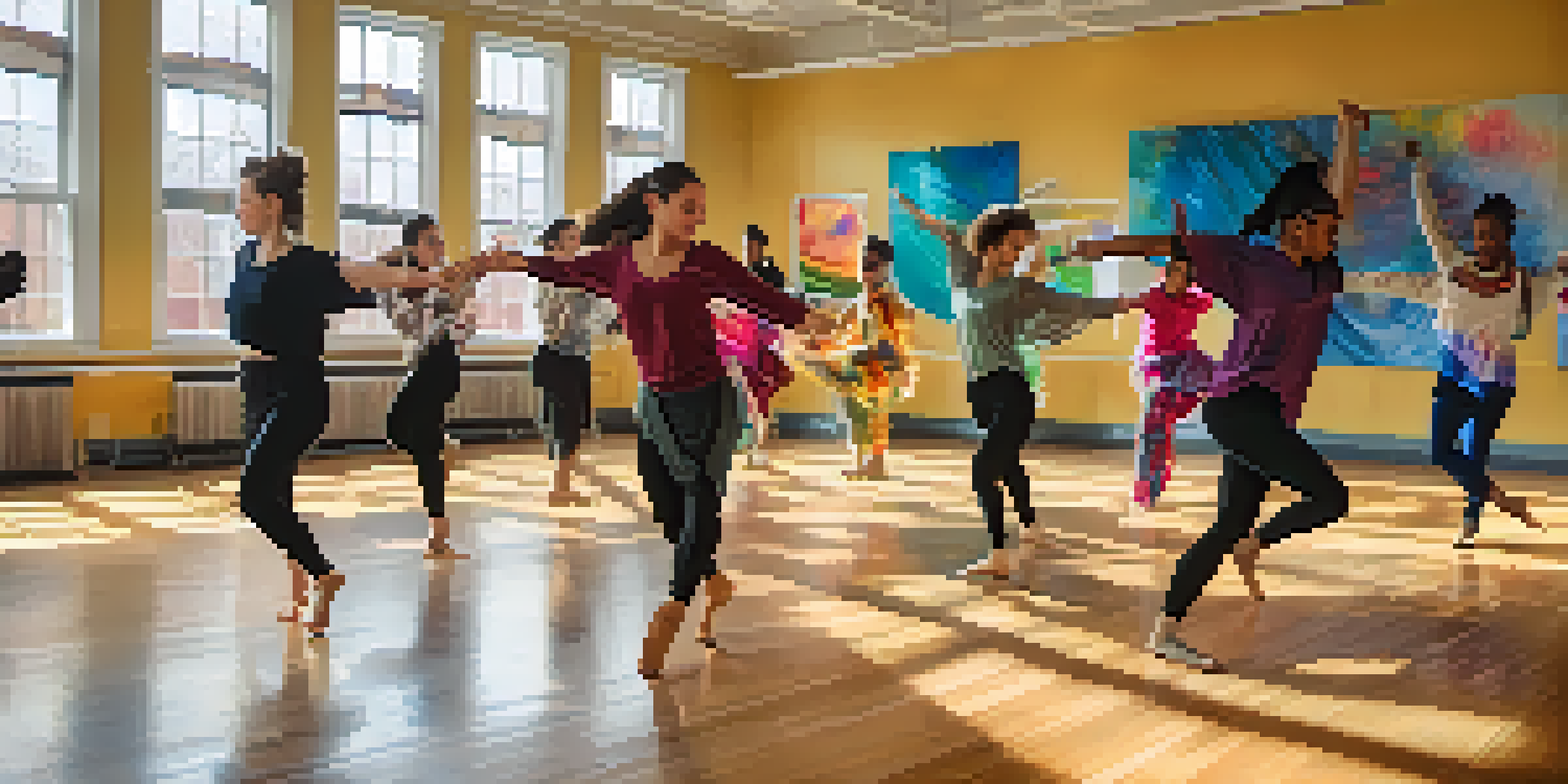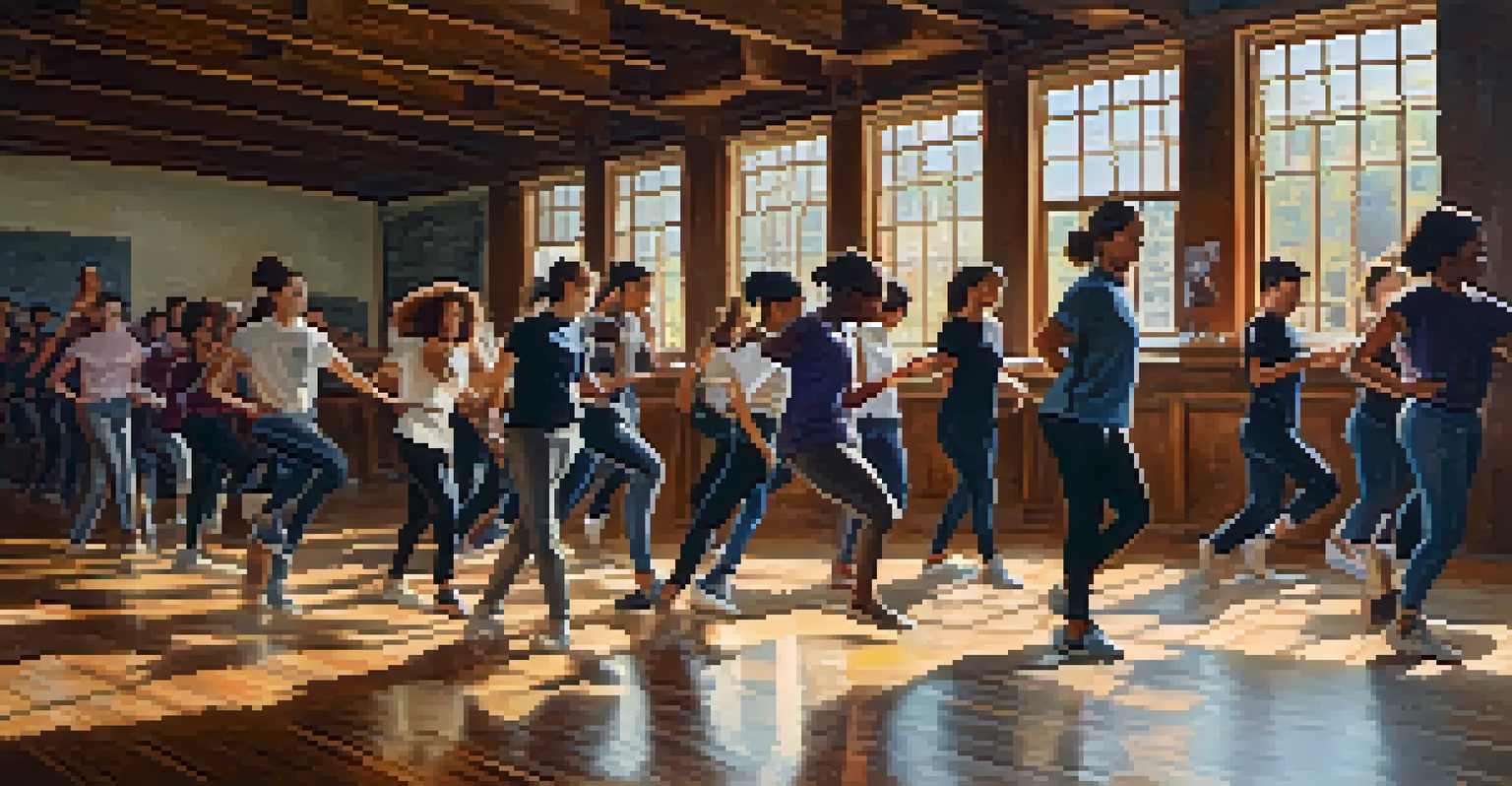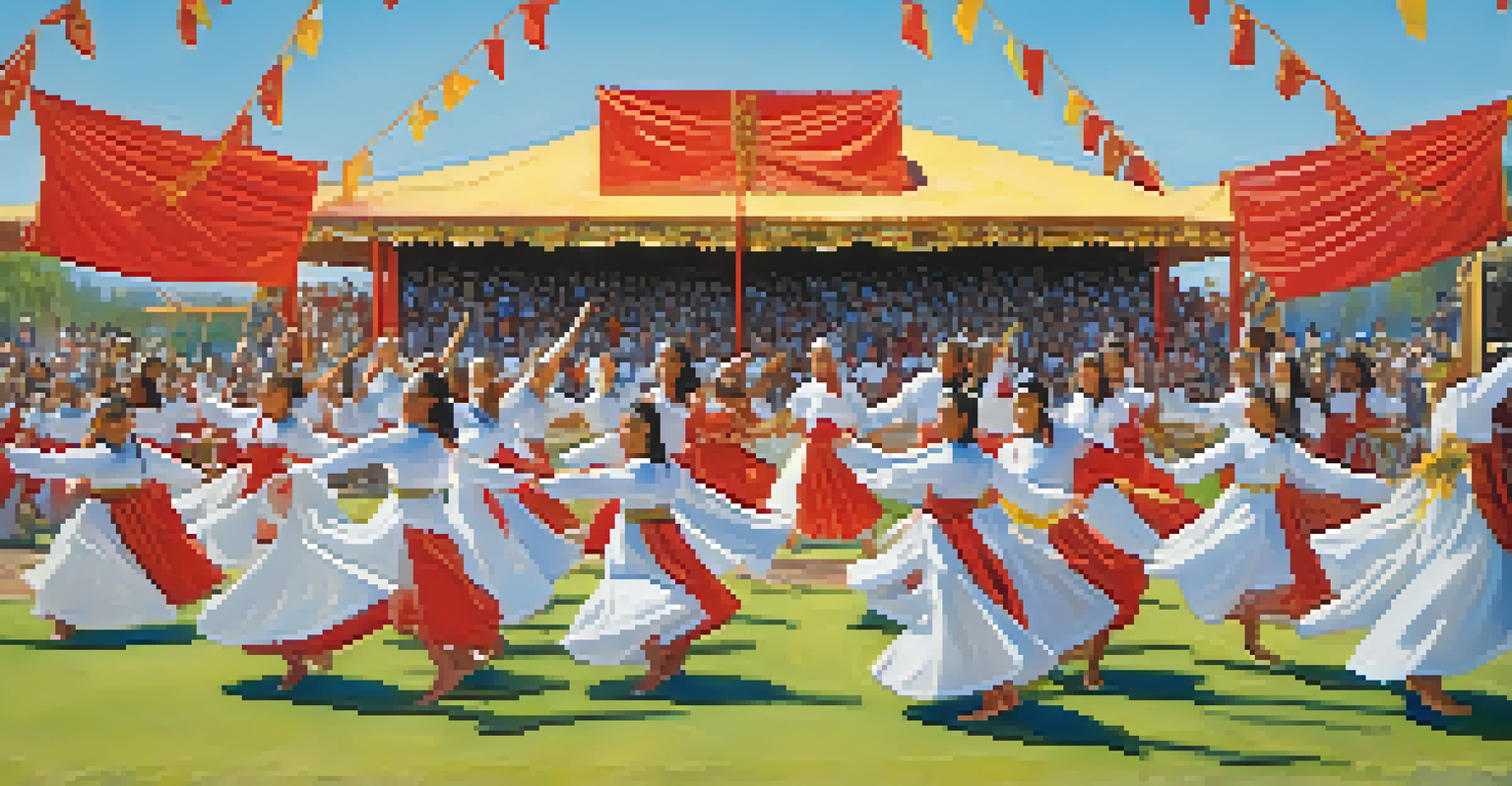Developing Creativity in Students through Dance Education

The Importance of Creativity in Education
Creativity is a vital skill in today's world, driving innovation and problem-solving. In an educational context, fostering creativity allows students to think outside the box and approach challenges from unique angles. This ability to innovate is not just about art; it transcends into every subject, from science to literature.
Creativity takes courage.
When students are encouraged to express themselves creatively, they develop confidence and resilience. These traits help them tackle obstacles and learn to value their own ideas. A creative mindset can also lead to improved performance academically, as students become more engaged and invested in their learning process.
Dance education, in particular, provides a dynamic platform for students to explore their creativity. By moving their bodies and interpreting music, students can express emotions that words sometimes fail to capture. This form of expression can significantly enhance their overall educational experience.
Dance as a Medium for Self-Expression
Dance is a universal language, allowing students to convey feelings and ideas without the need for words. This form of self-expression can be incredibly liberating, fostering an environment where students feel safe to explore their identities. It encourages them to share their perspectives, which is essential for personal growth.

Through dance, students learn to communicate and collaborate with their peers, enhancing their social skills. Group choreography encourages teamwork and compromise, teaching them the importance of listening and valuing others' contributions. This collaborative effort not only boosts creativity but also builds a sense of community among students.
Creativity Boosts Learning Engagement
Fostering creativity in education enhances student engagement and academic performance across all subjects.
Moreover, the process of creating dance routines allows students to experiment with different styles and techniques. This experimentation is key to developing a creative mindset, as it encourages them to take risks and embrace mistakes as part of the learning process. The freedom to explore through movement is invaluable in nurturing their imaginative capabilities.
Enhancing Problem-Solving Skills through Dance
Dance education challenges students to think critically and solve problems in real-time. When creating choreography, they must consider how movements flow together and tell a story, prompting them to strategize and make decisions. This kind of thinking translates into better problem-solving skills in academic subjects and everyday life.
Dance is the hidden language of the soul.
By engaging in improvisation, students learn to adapt quickly to new situations. They discover that there are often multiple solutions to a single problem, which fosters an open-minded approach to challenges. This adaptability is crucial, especially in a fast-paced world where change is constant.
Furthermore, the analytical skills developed through dance can enhance students' ability to critique their own work. As they assess what works and what doesn't in their performances, they become more reflective thinkers. This self-evaluation is a key component of creative development, as it encourages continuous improvement.
Building Confidence through Performance
Performing in front of an audience can be a daunting experience, but it significantly boosts students' confidence. Dance education provides numerous opportunities for students to showcase their skills, helping them overcome stage fright and embrace their unique talents. This confidence often spills over into other areas of their lives, from classroom participation to social interactions.
As students prepare for performances, they learn the importance of commitment and perseverance. The process involves practice, dedication, and resilience, teaching them valuable life lessons about hard work and achievement. Each successful performance reinforces their belief in their abilities, nurturing a positive self-image.
Dance Enhances Emotional Intelligence
Dance education helps students explore and express their emotions, leading to greater empathy and understanding of others.
Additionally, receiving feedback from peers and instructors can further enhance their self-esteem. Constructive criticism helps students recognize their strengths while also identifying areas for growth. This balanced approach to feedback fosters a growth mindset, encouraging them to view challenges as opportunities for development.
Cultivating Emotional Intelligence through Dance
Dance education plays a pivotal role in developing emotional intelligence among students. Engaging with music and movement allows them to explore and express their emotions in a safe and supportive environment. This exploration leads to a deeper understanding of their feelings and those of others, which is essential for building empathy.
Through choreography and performance, students learn to convey complex emotions, enhancing their ability to connect with others. This connection is crucial in forming relationships, both personal and professional, as it fosters understanding and compassion. The emotional skills gained through dance can significantly impact their interactions outside the dance studio.
Moreover, as students witness the emotional responses of their peers during performances, they learn to appreciate diverse perspectives. This exposure enriches their emotional vocabulary and helps them navigate their own feelings more effectively. Ultimately, cultivating emotional intelligence through dance contributes to well-rounded individuals who are more attuned to the world around them.
Integrating Dance with Other Disciplines
Dance education doesn't exist in a vacuum; it can be integrated seamlessly with other academic subjects. For instance, incorporating history into dance can help students understand cultural contexts, while math can play a role in learning choreography patterns and rhythms. This interdisciplinary approach fosters a holistic educational experience.
By blending dance with other subjects, educators can create engaging lessons that cater to various learning styles. For example, visual learners can benefit from seeing dance movements, while kinesthetic learners can grasp concepts through physical activity. This versatility makes learning more accessible and enjoyable for all students.
Interdisciplinary Learning Through Dance
Integrating dance with other academic subjects creates a holistic educational experience that caters to diverse learning styles.
Furthermore, integrating dance into the curriculum encourages creativity across disciplines. Students may find inspiration in their dance classes that enhances their writing, art, or even scientific inquiry. This cross-pollination of ideas nurtures a vibrant learning environment where creativity thrives.
The Lasting Impact of Dance Education
The benefits of dance education extend far beyond the classroom, leaving a lasting impact on students' lives. The skills cultivated through dance—creativity, confidence, emotional intelligence—are invaluable as they transition into adulthood. These attributes equip them to navigate the complexities of the modern world with grace and resilience.
Moreover, students who engage in dance education often become lifelong learners and advocates for the arts. They carry forward the appreciation for creativity and collaboration, inspiring those around them. This ripple effect can lead to a more creative and empathetic society as these individuals share their knowledge and experiences.

Ultimately, investing in dance education is an investment in the future. By nurturing creativity in students today, we are preparing them to become innovative thinkers and compassionate leaders. The world needs these qualities now more than ever, and dance education is a powerful vehicle for achieving this goal.